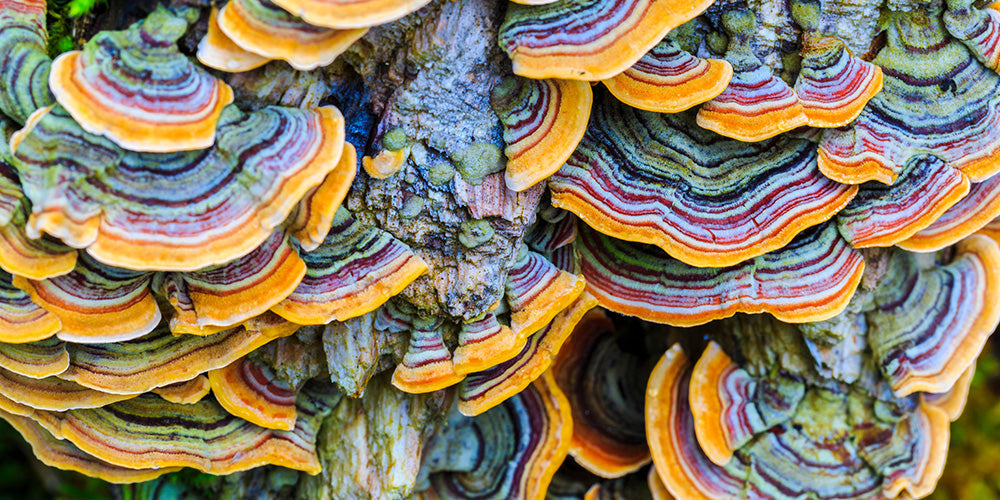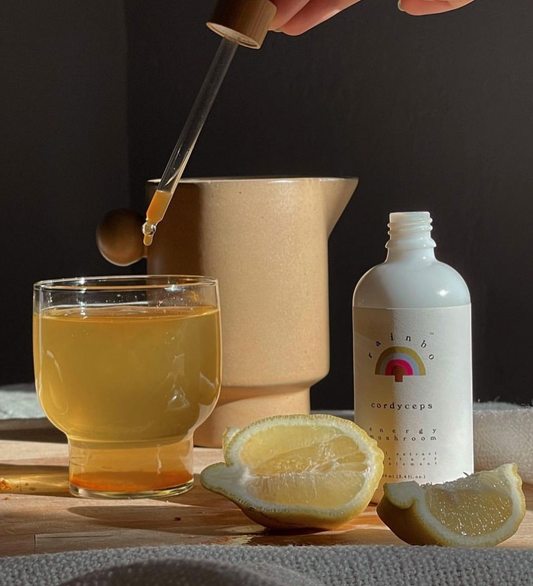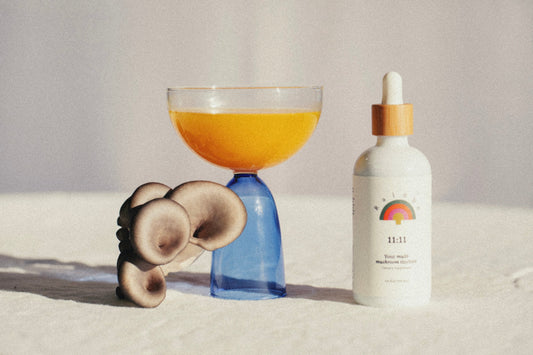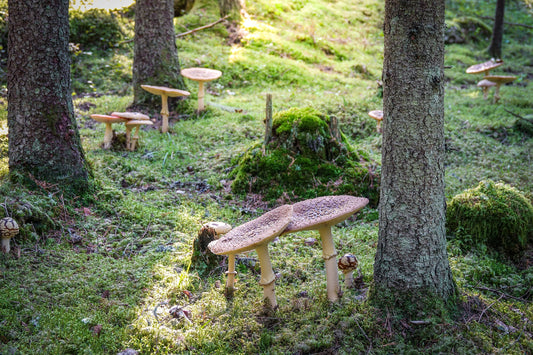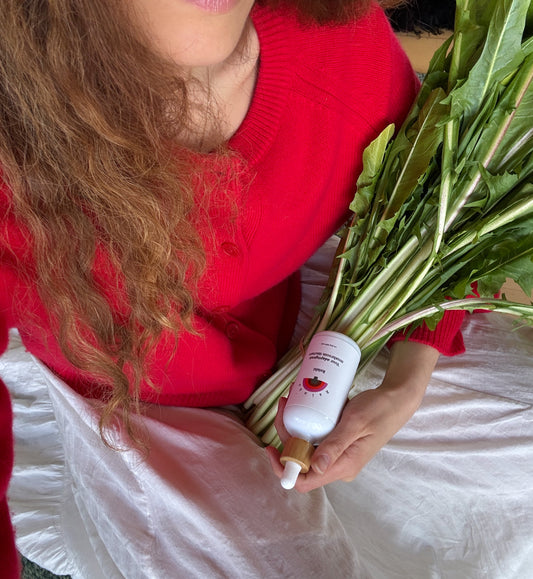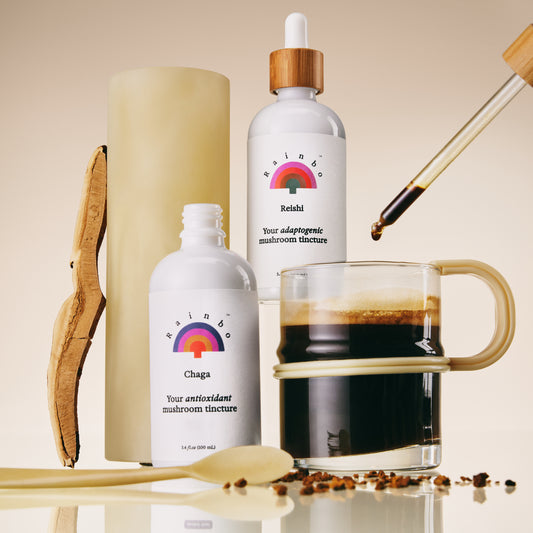Turkey Tail
Turkey Tail, who is she?
If you enjoy long walks in the forest then you know her, even if you think you don’t.
Turkey tail mushrooms grow almost anywhere trees are found. They look like thin, wavy shelves overlapping one another, found fanning out from decomposing hardwood and tree stumps. They have distinctive patterns of colourful rings, like little mini turkey tails (hence the name). Rest assured our Turkey tail doesn't have real turkey in it (sometimes people ask).
Its latin name, Trametes veriscolor, translates into “one that is thin” and “changing colour”.
The mushroom surface alternates between fuzzy, smooth, and coloured zones. Called the Yun Zhi (the cloud mushroom) in Chinese, these dreamy swirls can be bright shades of white, brown, orange with occasional lines of green, blue and maroon. Turkey tail is a polypore mushroom, which means its underside has pores not gills. These pores are often white, sometimes yellow, and can help with identification of a true Turkey tail mushroom.
Native and abundant in Europe, Asia and North America, the long history as an ally to human health starts in Eastern medicine systems, where the tale of turkey tail mushroom goes from traditional tea to licensed medical product.
History
The Turkey tail mushroom has been featured in the Chinese materia medica since around 200 BC. It has a tough, leathery exterior making it unpalatable and so it has always been consumed as a brewed medicinal tea. In Traditional Chinese medicine (TCM) Turkey tail tea is drunk to strengthen the spirit (Shen) and vital energy (Chi). It’s been used for lung and liver support for centuries. Then in 1965, after observing a remarkable case of healing, a Japanese chemical engineer brought turkey tail under the microscope. Thorough investigation into the immune response activated by compounds found in this mushroom led to the isolation of a protein-bound polysaccharide, PSK (marketed as Krestin). Later, a closely related polysaccharide-peptide, PSP, was isolated and also approved for clinical use. PSK and PSP are now the best known commercial examples of fungal polysaccharide-protein complexes holding important therapeutic value in immunomodulation.
The abundant clinical investigation into turkey tail brought to light the application potential of mushroom polysaccharides, also known as beta-glucans, as potent immunomodulators.
The polysaccharides of Turkey tail are suspected to interact directly with our immune cells (namely dendritic and natural killer cells), increasing their numbers in the body and augmenting their ability to seek out and dispose of unwanted pathogens. Not only that - but these polysaccharides also promote a beneficial shift in the immune state of the body, as measured by messenger signals in the blood, activating other immune cells involved in long-term immunological memory.
The whole mushroom extract contains more than just polysaccharides. The array of steroids, triterpenes, organic acids, alkaloids and pro-vitamin D2 found in Turkey tail are thought to contribute to its antioxidant and pre-biotic activity.
It’s important to mention with critical caution that an integration of the medical knowledge from the East and West has not yet reached its full potential and there is a need for more investigation into the clinical application of medicinal mushrooms, such as Turkey tail, in Western medical systems.
That being said, as the most widely-studied medicinal mushroom in scientific literature, the evidence for the benefits of Turkey tail is definitely compelling.
Benefits
-
Immune health Turkey tail extracts have shown broad immune activity (& here), specifically stimulating the activity of immune cells and also promoting a beneficial shift in the systemic immune state of the body, thereby supporting both the adaptive and innate immune responses.
Learn more about how medicinal mushrooms support immune function -
Gut health Recent studies have also shown that Turkey tail polysaccharides have a prebiotic effect on the gut microbiome, promoting a healthy balance of beneficial bacteria in the gut.
Learn more about fungi and gut health - Antioxidant There are more than just polysaccharides found in turkey tail mushroom. Some studies identify over 30 different compounds with antioxidant properties. The full spectrum hot water extract has been shown to act as a natural source of antioxidants, protecting against DNA damage.
Supporting our immune system, gut health and managing oxidative stress in the body are all broad reaching and interconnected aspects critical in promoting long term health and wellbeing.
Turkey Tail, our colourful and ubiquitous forest friend, can be used as a strong ally in both preventative and therapeutic practices to help reach our long term health goals.
Definitions:
Materia medica (lit: 'medical material/substance') is a Latin term from the history of pharmacy for the body of collected knowledge about the therapeutic properties of any substance used for healing (i.e., medicines). Taken from wikipedia.
